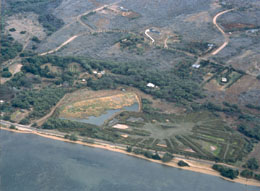Kealia Plan Defines Conservation for 15 Years
By Sonia Isotov
The US Fish and Wildlife Service (Service) today announced the availability of Comprehensive Conservation Plans (CCPs) that will guide management of Keālia Pond and Kakahai‘a National Wildlife Refuges (NWRs) for the next 15 years.
“The CCPs outline refuge goals and strategies, staffing and funding needs, and management and research priorities,” said Glynnis Nakai, Project Leader of the Maui National Wildlife Refuge (NWR) Complex, in a written statement. The Maui NWR Complex includes Keālia Pond and Kakahai‘a NWRs.
The CCPs were developed to provide scientifically grounded guidance for improving and managing the Refuges’ habitats for the long-term conservation of Hawaii’s endangered waterbirds, native plants and migratory birds.
The plans identify actions necessary for enhancing, protecting and sustaining the Refuges’ natural resources, including improvements to habitats, migratory bird populations and threatened, endangered or rare species.
The planning team modified the plan and the preferred alternative to reflect the many comments received during the public comment phase of the draft CCPs.
Implementation of the long-term management actions and projects will depend on the availability of funding over the next 15 years.
As funding becomes available, management projects include:
Keālia Pond
- Removal of the most aggressive invasive plants and control of pickleweed on Mā‘alaea Flats
- Construction of a water-control structure, development of new wells to deliver water to target areas, and recontouring topography to maintain water on Mā‘alaea Flats
Kakahai‘a
- Restoration of the 15-acre Old Pond and 5.5 acres of New Pond by removing California bulrush and other aggressive nonnative species, dredging accumulated sediment, removing radial levees, reconstructing perimeter levees, replacing the water-control structure, and replacing the pump between the two ponds

Kakahaia National Wildlife Refuge, Milepost 6 Mokulele Highway (Hwy. 311) , is part of the Maui National Wildlife Refuge Complex. Photo credit USFWS
The multi-year planning process began for the Keālia Pond and Kakahai‘a NWRs in 2009 and involved interested individuals, local conservation and interest groups, research organizations, Native Hawaiian organizations, local, state, and federal government agencies and elected officials.
Public outreach included meetings, presentations, open houses, distribution of planning updates, workshops and other engagement opportunities that helped the refuge to develop a sound management plan.
“The planning process provided a good opportunity for us to review what’s been accomplished on the refuge thus far and what we can do in the coming years,” Nakai said.
“We had substantial public input, which has given us a good sense of what’s been working to date and what the challenges are for the future. We are thankful to our many partners who contributed to this planning effort.”
The final CCPs are posted on the Refuges’ web sites at http://www.fws.gov/kealiapond/planning.html and http://www.fws.gov/kakahaia/planning.html or may be obtained from the Refuge office at Milepost 6 Mokulele Highway, Kīhei, Hawai‘i.











